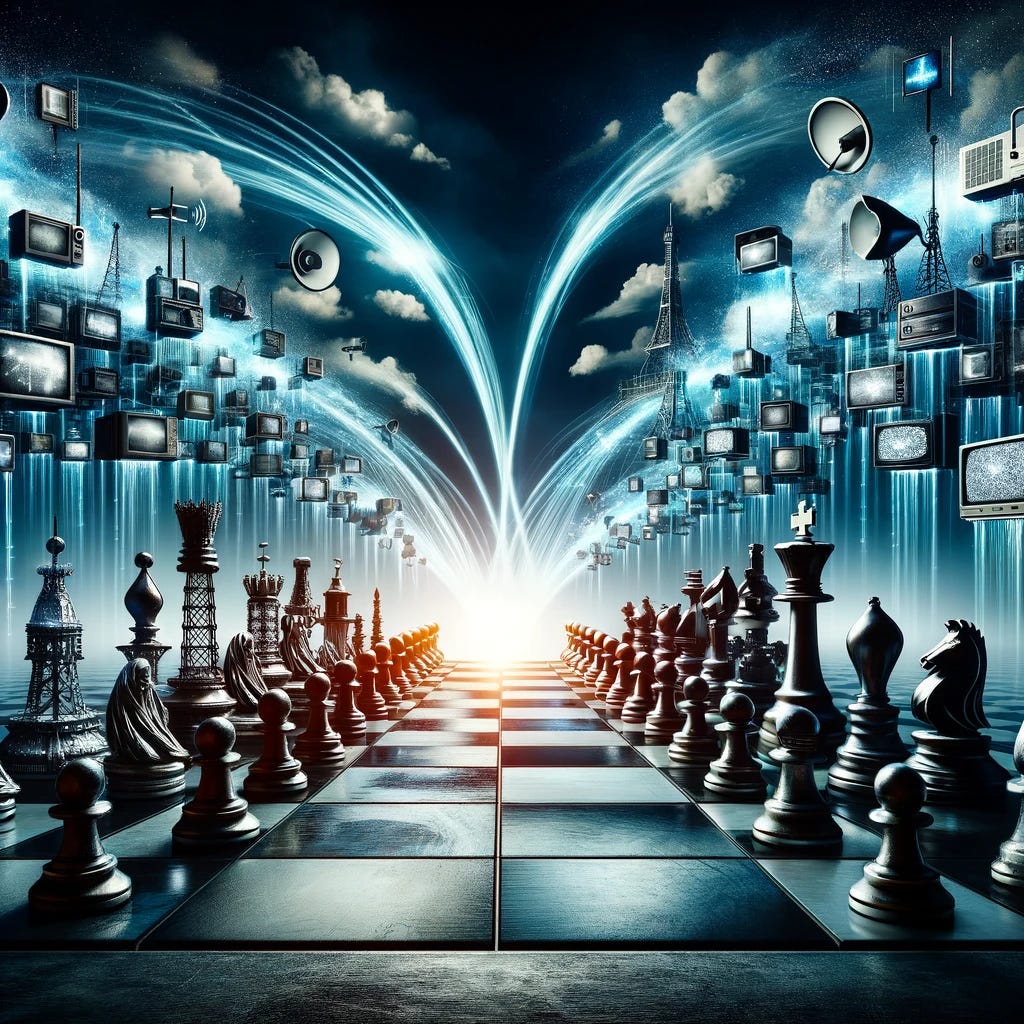Beyond Binge-Watching: Navigating Digital Disruption’s New Frontiers
The Rise and Rivalry of Streaming Giants in the Battle for Tomorrow's Viewers
Today’s youth have grown up in a world of ever-changing streaming services. Now, their digital preferences are dictating those companies’ next moves, turning Davids into Goliaths—and vice versa.
The question is: which streamers will end up victorious, and which, failing to gain the loyalty of their youngest viewers, will fall to the wayside?
We can look to the ’90s for answers.
Once upon a time, Barnes & Noble was Goliath. In this era, Amazon was David, a fledgling online bookstore stepping into the arena with nothing but a metaphorical slingshot in hand. It's a scenario that seems almost surreal today, considering the monumental shift that’s since occurred. Barnes & Noble now exists as only a shadow of its former self while Amazon may be the largest U.S. retailer, according to JP Morgan analysts.
So what took down the former: overconfidence or complacency?
To its detriment, Barnes & Noble shrugged off new disruptors like Amazon. They scoffed when Bezos dubbed Amazon “The Earth’s Biggest Bookstore” (Barnes & Noble claimed it was a rip-off of their slogan, “World’s Largest Bookseller”). The former heavyweight underestimated both Amazon’s potential and the Internet’s coming transformative power, dooming its future.
If we’ve learned anything from this rivalry, it’s that disruption comes in cycles. Time and again a similar pattern emerges: quite often the Davids of today are the Goliaths of tomorrow. It’s clear legacy players tend to grow complacent. By the time they take note of their disruptors’ potential, it’s already too late.
In the latest news from today’s TV wars, Fox, Warner Bros. Discovery, and ESPN (Disney) are teaming up to create a streaming service just for sports to stave off such irrelevance. As discussed earlier this month, this is most certainly a response to Netflix’s new foray into live sports with their WWE deal. It seems to be the establishment's way of saying, “We’re not going anywhere…and we’re prepared to take on challengers.”
This situation is not unlike Hulu’s rise in 2008—it was essentially an insider collaboration between Fox and NBC, designed to quash Netflix’s growth at the time. As the Hulu collaborators learned, however, sharing the ball with other big players is easier said than done. The streamer faced early obstacles due to the "too many cooks in the kitchen" dilemma, as each legacy provider had their own distinct incentives and agendas, leading to conflicting directions and priorities.
The situation has become increasingly complicated—and, frankly, a mess—for consumers, as well.The golden age of à la carte subscriptions, when subscribing to Netflix cost a mere $7.99 and allowed you to sidestep unwanted live news and sports, seems to be waning. Now, anyone seeking comprehensive live sports coverage finds themselves requiring multiple subscriptions, with options like Hulu Live and YouTube Live demanding steep prices upwards of $75 per month.
This shift signals a departure from “unbundling,” which once promised convenience and cost savings. As cable providers continue to hemorrhage funds, a counter-movement is emerging: a rebundling of sorts, in which a multitude of providers may soon converge under a single app. And as live sports increasingly migrate to streaming platforms—FuboTV recently accused other providers of pilfering their affordable, sports-first model—the traditional cable model faces potential extinction. This transition not only threatens to eliminate smaller providers, as evidenced by the bankruptcy of Bally Sports/Diamond Sports, but it also offers the tantalizing possibility of enlarging the geographical reach of sports broadcasts.
The demographic change makes responding to this evolution more urgent.
Unlike older generations that gathered around televisions for live broadcasts, younger generations increasingly turn to digital platforms for solitary viewership, seeking on-demand and interactive content. And this shift is not just about the medium of consumption. It also reflects broader changes in interests and lifestyle preferences.
Now, with the rise of Esports, streaming services, and bite-sized highlights on social media, sports broadcasters have their work cut out for them.
Nickelodeon, with its innovative approach to broadcasting NFL games, may be leading the charge in this new era, showcasing the potential for reinvigorating interest in sports among younger audiences via creative and engaging formats—and the potential, yet again, for Davids to become Goliaths.
More, strategic moves by Disney's ESPN and Warner Discovery to promote their own streaming apps present a palpable risk of self-cannibalization. The two Goliaths may be teaming up now, but they’ll soon face friction as they aim to attract audiences to their exclusive offerings. Meanwhile, Disney CEO Bob Iger's recent announcement about the unique features of the ESPN app, including integrated betting, fantasy sports, merchandise, and securing Nick Saban as a lead pundit, seeks to capture huge swaths of sports lovers—a Goliath pivoting to stay relevant to today’s youth.
Initially, the advent of streaming platforms disrupted the traditional television and movie distribution models, offering consumers unprecedented access to content on demand, without the need for physical media or scheduled broadcasts. (ESPN's planned 2025 launch of its own platform exemplifies this.) But could this also lead to a form of self-cannibalization?
However this shakes out in the end, with traditional bastions of cable, such as sports and the news industry, facing existential threats—the latter gasping for air on what feels like a ventilator—cable's stronghold appears to be crumbling. At the same time, sports broadcasting, despite its lucrative nature, finds itself at a crossroads, necessitating a reimagining of its presentation.
For now, one thing is clear. Some of the needed changes to stay relevant in media will require extensive marketing strategies to resonate with younger viewers. In the meantime, we may ask: what will further consolidation mean for smaller players? And will these changes do anything to make watching sports more convenient?
Overall, the streaming wars underscore the dynamic nature of technological and market evolution, where today's disruptors become tomorrow's incumbents, facing challenges from new entrants aiming to redefine the landscape once again.
Put another way, it’s a perpetual David and Goliath contest—where all bets are off.
Thank you for reading. If you like what you just read, please subscribe for more content. Consume at Once is about how to simplify a complex world being disrupted by technology. Any opinions or forecasts contained herein reflect the personal and subjective judgments and assumptions of the author only.




